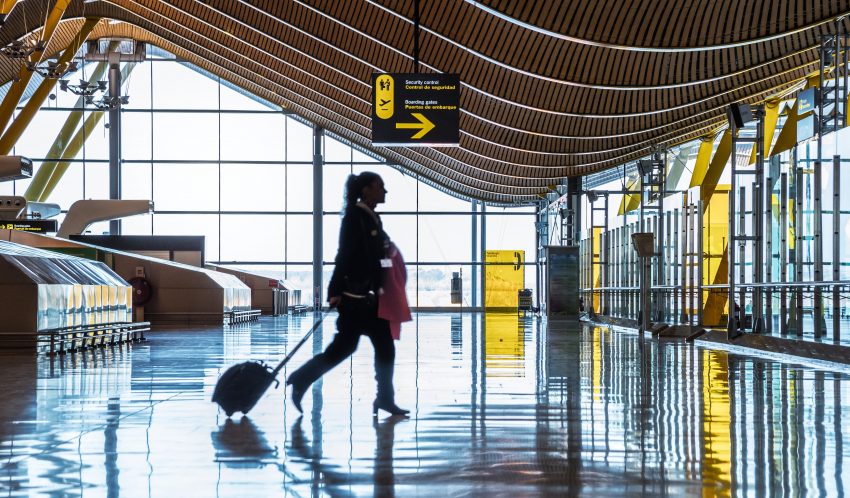Airports play a vital role in society as catalysts for global exchange and sustainable growth. While existing airports are continually expanding and upgrading, attention is now being focused on undeveloped sites, also known as greenfield airports. Regulators, governments and private entities are delving into innovative greenfield projects to elevate economic development and capacity. This blog unveils the considerations for a sustainable and more connected future for the air transport industry.
Innovative Best Practice
To Greenfield airports provide the opportunity for developers and planners to assess which airports are outperforming others regarding efficiency and customer experience. By developing innovative solutions to common problems, greenfield sites can enter a competitive market with ambitious points of difference, attracting aviation and non-aviation businesses as well as being passengers first choice.
When construction started on the new Istanbul International Airport (IST) to replace the incumbent land-restricted Atatürk Airport, digital innovation was at the forefront of the operator’s strategy. As an example, in the emerging field of artificial intelligence, the passenger experience has been enhanced by allowing real-time interaction with comprehensive information on flights, queues and parking. Virtual assistants speak different languages and are continuously evolving and learning based on passenger feedback. In addition, emerging technologies in biometric identification allow passengers to access specific areas within the terminal building. By focusing on innovative solutions to common problems, IST was recognised by Airport Council International as only one of two European airports in the over 40 million passengers per year category, achieving the top 20% overall satisfaction score for Airport Service Quality.
Sustainable Infrastructure
The aviation industry often faces scrutiny regarding its role in carbon emissions, which is attributable to the inefficiencies in fuel consumption exhibited by older-generation aircraft and the substantial footprint of airports as integral urban infrastructure. Opportunities exist for greenfield airports to ensure sustainability is at the forefront of tactical planning. Whilst carbon zero is not attainable with today’s passenger aircraft, airports are continuously researching and investing in sustainability strategies to allow for a cleaner future within the industry. Dubai’s greenfield airport, Al Maktoum International (DWC), with aspirations to be the largest airport in the world, is seeking to lead this area with ambitions for the airport and the city of Dubai to become part of the same reciprocal energy system. Similarly, with India being one of the largest emerging aviation markets, greenfield airports are increasing throughout the country. The Manohar International Airport (GOX), opened in 2022, has made significant contributions to reducing its carbon footprint by installing a 5MW solar power generation system to cater for 60% of total annual energy consumption.
While airports have vast land areas to cater to solar panels, a thorough safety assessment of the airspace protection, reflection for flight crews, access routes of emergency vehicles, and interference with CNS needs to be undertaken. To70 Aviation has demonstrated experience in undertaking solar safety assessment and encourages airports to consider implementing processes in their safety management systems.

Economic and Social Development
The recognition of airports as crucial drivers of economic and social progress is not a new concept, given their role in the global supply chain. The economic benefits of greenfield airports, however, mean that opportunities in tourism, trade, jobs and living standards often boost cities and communities surrounding the sites. Christchurch International Airport (CHC) operates as the gateway to New Zealand’s South Island and has been continually growing since inception. Christchurch Airport’s operator has identified the Central Otago region as one of the fastest growing areas of the country, justifying an additional airport in years to come to maximise the social and economic benefits, citing ‘this is a once in a lifetime opportunity to make sure future generations can enjoy all the benefits of high-quality air connectivity.’ Currently in the initial concept planning and site selection phases of development, the new airport for Central Otago is some years off, but could prove largely beneficial for the region’s economy.
Enhancing Regional Connectivity and Capacity
Where airports currently face restrictions on connectivity or capacity capability, greenfield airports allow the opportunity to address these issues. Airports become capacity-restricted for several reasons, most commonly because the runway or terminal infrastructure cannot support demand. This could simply be because there is no room for an airport to expand on the land available. Additionally, in airports that are built in surrounding communities, curfews are often placed on the airports during night hours, meaning the amount of air traffic movements per day is significantly reduced, sometimes for up to 7 hours per day. Western Sydney Airport (WSI), located in Australia’s largest city and due for completion in 2026, aims to relieve the pressures on demand by opening 24/7/365, providing airlines with more flexibility to schedule flights and deal with irregular operations. Data shows that an increase in capacity is needed for the Sydney region, expecting to double over the next 20 years. With an open-day capacity to allow 10 million passengers per year and an ultimate growth strategy to cater for 82 million passengers annually, WSI is well positioned to support the additional demand and connect businesses to national and international markets.
Conclusion
The evolution of greenfield airports introduces a new era of innovation and sustainability for the aviation industry. By leveraging digital advancements, embracing renewable energy solutions, and fostering connectivity for emerging markets, greenfield airports offer not just a gateway to the sky but also provide communities and future generations with an outlook for a prosperous future. To70 Aviation have experts in Airport Planning, Capacity Efficiency and Airspace Design with real-world experience in developing greenfield airports.

ABOUT THE AUTHOR
Serving as an Aviation Consultant at To70’s Brisbane office. In this capacity, he collaborates with airport and government clients on diverse projects related to airport master planning, airport safeguarding, and airspace design. Liam brings to the table a wealth of experience in airport services, process improvement, and aeromedical operations control, offering a distinctive perspective on critical considerations within the aviation industry.
Check out our open vacancies around the globe!

